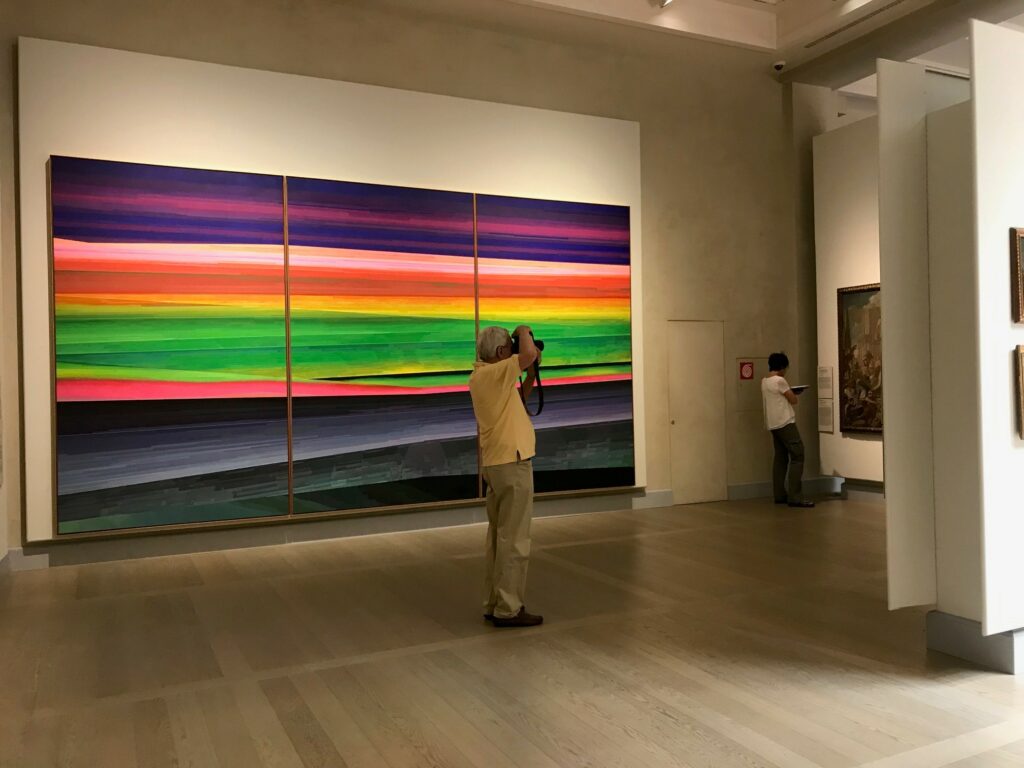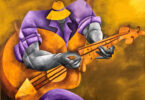GALLERIE D’ITALIA MILANO
The exhibition, curated by Carolyn Christov-Bakargiev and Marcella Beccaria with the general coordination of Gianfranco Brunelli, investigates the relationship between technology, human subjectivity and art. The works have been selected from the collections of Intesa Sanpaolo and those of the Castello di Rivoli Museum of Contemporary Art and will remain on display from Friday 31 May to Sunday 8 September 2019.

Since the dawn of humanity, technological advances have changed the experience of reality, inducing changes in social relations, transforming the possible forms of artistic creativity. The theme is very ambitious and particularly significant at the present time, in the context of the 4.0 company and, in the future, 5.0, in which digital innovation places us in constant relationship with new experiences of robotization and artificial intelligence.

Starting from the perspective of the present, the exhibition proposes a path based on intentionally non-chronological dialogues: it ranges from ancient Greek vases to works by international contemporary artists digging into the ways in which artists from different eras related to technology.
By technology (from téchne, art, skill, craft, and logos,) we mean the set of knowledge through which science applies itself to create useful tools for society: from the first stone used by man, to the use of fire, iron, to the discovery of terracotta, until the joint application of genetics, and new frontieres of technology.

In the room to the right, entering the splendid building of the Gallerie d’Italia (which in the past was the headquarters of the Banca Commerciale Italiana), we meet the video by Grazia Toderi, a suggestive projection from above of a stadium immersed in sound and light; continuing there are Grazia Varisco, Gianni Colombo and Giovanni Anceschi, among the founders of the T group: they all have in common the research on light, the energies that invade the space and the dynamism that underlies the form.

It was said above that in this exhibition there is no chronological order, so the objective is actually to make people understand how artists have always witnessed changes in their own times. But it is starting from the passage from a single work to a serial production that the use of technology that then expands exponentially with the digital era makes its way into art. A work on display reminds us that the idea of seriality was already present before the invention of photography. This is the tempera on table, by Choluj that reproduces the miraculous icons of the Madonna.

Although the stylistic and temporal contrast is remarkable, it is possible to understand how the spirit that unites the artists who have worked in such different times is that of recording changes in the collective and individual imagination. Some oil paintings of the nineteenth century shed light on the past and the technological innovations of the time, The trains, (Gerolamo Induno) the change of the landscape, the speed, the portraits of the characters of the time with Eugenio Gignous and then the advent of industry as in the paintings of Boccioni, and then suddenly move on to contemporaries, to video art. The video installation by Ed Atkins (Oxford 1982) stands out among all of them, made with CGI (Computer Generated Imagery) animations and the Faceshift software, where the characters, with their seductive beauty, have hyper-realistic features. The video is inspired by a tragic event, really happened in Florida in 2013, in other words it tells of a man who fell asleep with his house in an immense chasm during his sleep. Interestingly, emotions can be generated by the artificial system that in this case takes us away from a human and emotional understanding. Even Cécile B. Evans (Cleveland Ohio 1983) with her video “What the Heart Wants” welcomes us in a “liquid” atmosphere making us enter her virtual world, a world of a possible future where extreme technological evolution makes be born disturbing beings, developed in the laboratory. Everyone seems to feel emotions, a typically human quality that is difficult to extinguish. A large control company called Hyper then determines the fates of these strange individuals. A real nightmare where there are systems that outside control could lead to the disappearance of our species. So if we look away from the video we come across Giorgio De Chirico’s paintings and we are overwhelmed by the beauty of his metaphysical landscapes and by the disquieting mannequins, an archaic past that resurfaces in the viewer’s eyes.

Then there were the works of the great Lucio Fontana, who with his pictorial revolution of cutting on the canvas opened up new meanings in contemporary art, investigating the mystery of empty space. At the center of the great hall among the beautiful Greek vases is the structure that houses the installation The Paradise Institute, 2001, a 360-degree involvement with total immersion in a cinema environment. The work is by Janet Cardiff in collaboration with George Bures Miller and combines sculpture, installation, performance, video and sound. Among multiple narrative levels there is a noir cinema show, where the viewer is the absolute protagonist because totally immersed in virtual reality. What unites all the works here though so different in style, technique and period is the tension towards the synchronicity of the events, a dimension that can lead us through the art towards a greater knowledge of ourselves. As long as the use of technology does not become an end in itself instead of the means by which to bring human beings closer to the mystery of creation.






Leave a Comment